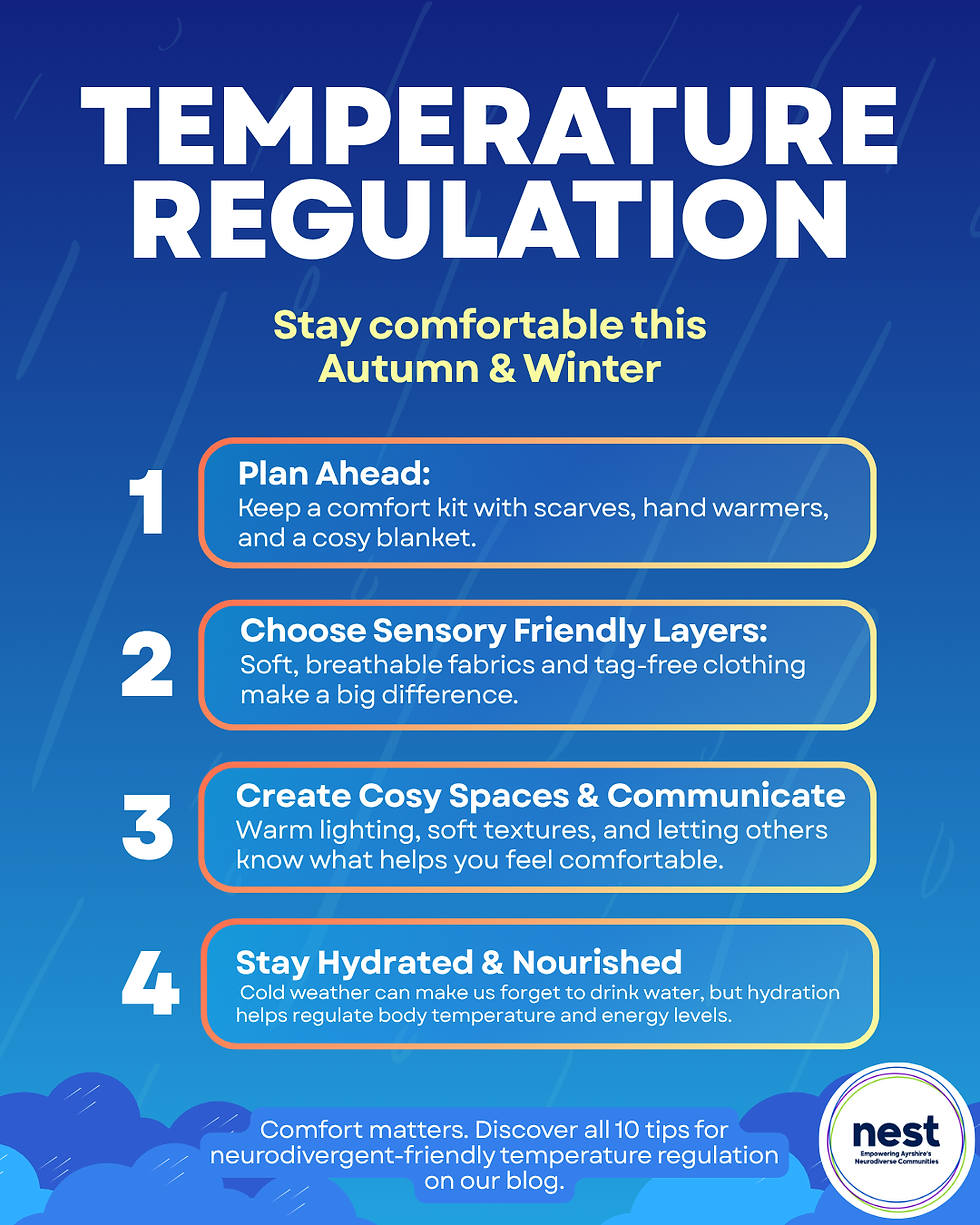🚨Myth-Busting Monday: Autism Looks the Same for Everyone 🚨
- Celine Dyer

- Mar 17
- 1 min read
We challenge common misconceptions and replace them with facts that foster understanding and inclusion. Today’s myth is one that contributes to countless missed diagnoses and misunderstandings:
❌ Myth: Autism looks the same in everyone.
This couldn’t be further from the truth.
✅ Fact: Autism Presents Differently in Different People
Autism is a spectrum, not a one-size-fits-all condition. While some traits may be shared, the way autism manifests can vary widely from person to person.
Factors like personality, environment, support systems, and co-occurring conditions all influence how someone experiences and expresses their neurodivergence.
One especially important aspect of this conversation is masking—the act of hiding or suppressing autistic traits to blend in socially.
This is particularly common among:
Women
Nonbinary individuals
People from marginalized communities
Because traditional diagnostic criteria was developed based on how autism presents in young boys, many people who don’t fit that mould have went undiagnosed or are misunderstood for years.
Why This Myth Is Harmful
Believing that autism has a “standard” look:
Invalidates the experiences of those who don’t fit stereotypes
Delays diagnoses, especially for women and nonbinary people
Discourages self-advocacy and access to support
Perpetuates stigma and exclusion
Embracing Neurodiversity Means Embracing Individuality
Understanding that autism looks different in everyone helps us:
Recognize and respect diverse expressions of neurodivergence
Support people more effectively
Challenge outdated stereotypes
Let’s Keep the Conversation Going
Have you encountered this myth before?
💬 Share your thoughts or experiences in the comments.
📢 Spread awareness by sharing this post with your community.
Together, we can build a world where all autistic voices are seen, heard, and valued—no matter how they present.








Understanding your camouflaging is the first step to unmasking when you feel safe. The CAT-Q provides the self-awareness needed for that journey.